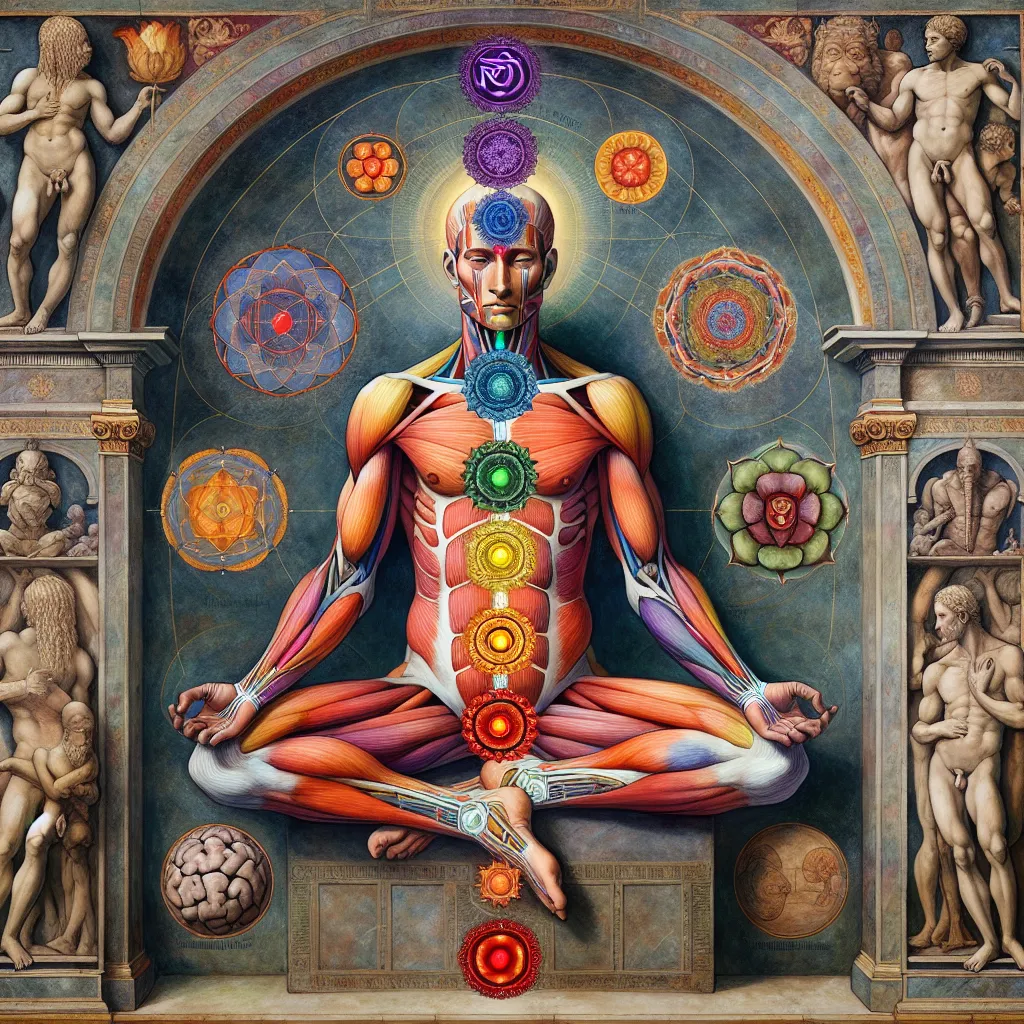
- Published on
- Authors

- Name
- You
Chakras in Hindu Tradition: Ancient Wisdom and Practices
The concept of chakras, which means "wheel" or "disk" in Sanskrit, forms the core of many spiritual and healing practices within Hindu tradition. Stemming from ancient texts and philosophies, the chakra system presents a fascinating blend of mystical wisdom and advanced science. This article will delve into the origins, significance, and practical applications of the chakra system.
Origins and Ancient Texts
The earliest mention of chakras is found in the Vedas, the oldest sacred texts of Hinduism, dating back to around 1500 BCE. However, it is in the Upanishads and later texts like the Yoga Sutras of Patanjali and the Hatha Yoga Pradipika that the concept is extensively elaborated upon.
Key Texts and Their Contributions
| Text | Approximate Date | Contribution |
|---|---|---|
| The Vedas | 1500 BCE | Mention of energy points |
| The Upanishads | 800 - 500 BCE | Meditation and mystical insights on energy centers |
| Yoga Sutras of Patanjali | 400 CE | Techniques to control bodily energies |
| Hatha Yoga Pradipika | 15th century | Detailed practices for energy manipulation and balance |
Philosophical Underpinnings
At its core, the chakra system is deeply rooted in the Samkhya philosophy, which stresses the importance of balancing the primal energies of Prakriti (nature) and Purusha (consciousness). The chakras are thought to be the intersection points of Nadis (channels of energy), where the life force energy, Prana, flows.
The Seven Main Chakras
There are traditionally seven main chakras aligned along the spine, each associated with specific physiological and spiritual functions:
| Chakra Name | Location | Associated Element | Key Attributes |
|---|---|---|---|
| Muladhara | Base of spine | Earth | Survival, grounding, basics of existence |
| Svadhisthana | Lower abdomen | Water | Sexuality, creativity, pleasure |
| Manipura | Solar plexus | Fire | Power, will, digestion |
| Anahata | Heart | Air | Love, compassion, equilibrium |
| Vishuddha | Throat | Ether | Communication, truth, expression |
| Ajna | Between the eyebrows | Mind | Intuition, perception, command of mind and senses |
| Sahasrara | Crown of head | Consciousness | Enlightenment, spiritual connection |
Practices and Rituals
1. Meditation and Visualization: Focused meditation on each chakra using visual aids like colored mandalas and affirmations to stimulate and balance the energy centers.
2. Pranayama (Breathing Exercises): Techniques such as Anulom Vilom (alternate nostril breathing) help in the regulation and free flow of Prana through the chakras.
3. Yoga Asanas: Specific yoga postures enhance the energy flow. For example, Savasana (Corpse Pose) helps in grounding Muladhara, while Shirshasana (Headstand) stimulates Sahasrara.
4. Mantra Chanting: Each chakra has a corresponding seed sound or Bija Mantra. For instance, chanting "Lam" stimulates Muladhara, and "Om" activates Ajna and Sahasrara.
Integrative Practice Table
| Practice | Technique | Primary Chakra Targeted | Benefits |
|---|---|---|---|
| Meditation | Visualization & Mantras | All | Improves overall energy balance and focus |
| Pranayama | Anulom Vilom | All | Enhances prana flow and mental clarity |
| Yoga Asanas | Savasana, Shirshasana | Muladhara, Sahasrara | Grounding and spiritual awakening |
| Mantra Chanting | "Lam", "Om" | Muladhara, Sahasrara | Stimulates specific energy centers |
Conclusion
The chakra system is a profound intersection of ancient mystical wisdom and what we understand today as energy regulation and mindfulness practices. By exploring and implementing the knowledge from ancient Hindu traditions, one can achieve holistic well-being and spiritual enlightenment. The interconnectedness of body, mind, and spirit through the lens of chakras continues to be a living knowledge, relevant across ages.
Feel free to explore more about each chakra and their practical applications in your daily life to harness this ancient wisdom for a balanced and harmonious existence.
